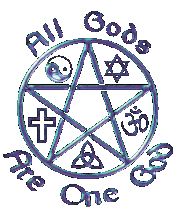
Imagine living in the times before electricity. Days began an ended with the sun, with winter bringing days that were daylight only eight hours; however for those in the very far north even fewer hours than that held light. Cold or freezing temperatures could mean days of little or no food, bringing a fear for your very survival and the survival of your family.
The Winter Solstice being the longest night...and the vigil you would keep, waiting for the light, knowing that with that light would gradually come longer days...becoming a celebration common to almost every culture on the planet.
How has our modern day holiday evolved from what it once was, a simple celebration of life of returning light?
The celebration of the Winter Solstice, Yule, almost always falls on December 22, and it has retained many of its Pagan traditions although in recent centuries it was adopted as the birthdate of Jesus by the Christian religions. In early times, December 25th was commemorated as the Birth of the Sun God, Mithra, and January 6 (Old Christmas) was a Dionysian festival. In Egypt, a celebration dedicated to Osiris was held at this time.
The word Yule probably derives from the Norse "iul" or the Anglo-Saxon "hweol", both meaning "wheel". However, Webster's Dictionary states that it originates in "geola" (Old English for "ice"), another name for the month during which it was celebrated. "Modronacht" (Mother's Night) is yet another Name for the Midwinter Festival.
Many of Yule's original customs have survived thousands of years. Among them is the ever-popular Yule Log. Traditionally, the Yule Log has been of oak, ash or beech, ritually cut (often at Dawn) and ceremonially carried into the house. It was lit by the head of the family with much ado. Toasts were often drunk with wine, cider or brandy, in those early morning hours, giving the participants a good head-start on the festivities. In many parts of Scandinavia, the object burnt was a fat wax candle, instead of a log. The candle was lit at Dawn and must burn until Midnight, or be considered an ill omen.
The Yule Log was said to have many magickal properties Remnants of it, or its ashes, were kept in the house throughout the year for many purposes. Among these were protection from thunderstorms or lightning, protection from hail, preserving humans from chilblains and animals from various diseases. It was customary to pour libations of wine or brandy upon the Log and to make offerings by scattering corn or bread crumbs over it. Even money was placed on the Log. Those charred "lucky coins" were then given to children or servants as gifts.
Women often kept ashes and charred bits from the log to be added to talismans they would create or added to the home alter and kept there through Twelvth Night.
Wassailing is another happy survival of an old tradition. "Wassail" comes from the Anglo-Saxon "Waes Hael", which has been translated to "Be Well," "Be Whole" or "Be Healthy." The proper response to this toast is "Drink Hael", making it a shared blessing, a mutual well-wishing. Traditionally, carolers went from door to door, singing and bearing their "Wassail Cups", to be rewarded with the drink and fruited breads or other sweets.
And no Yule celebration would be complete without a decorated tree or at the very least cut evergreens added through the house for decoration. This custom is thought to originate in the Roman custom of decorating homes with laurel and evergreen trees at the Kalends of January (the Roman Winter Solstice celebration).
For my family, we have decorated a tree, will be lighting a yule log, drinking Meade, and exchanging gifts; however we also do one additional ritual that is greatly due to the influence of Reiki in my life and that is to walk a circle of protection around our home as a family with bundles of smoking incense leading the way (out of doors we have less problems with keeping incense bundles burning than sage)...We walk the circle three times saying a prayer (offering gratitude at the first turn, remembering past years and those who are no longer with us on the second turn and asking for a blessing on the home and those who live within during the final lap)and sealing each of the four directions (N,S,E,W) with the symbol of Cho Ku Rei.
If you would like to add this to your Family Traditions it is a very nice evening activity for young and old. And in my opinion teaches children especially what the true importance of the holiday and that is Keeping the Vigil as our ancestors did in the past.
So I offer to you a Blessed Solstice...and Safe Happy Holidays.
Hugs
Retha








No comments:
Post a Comment